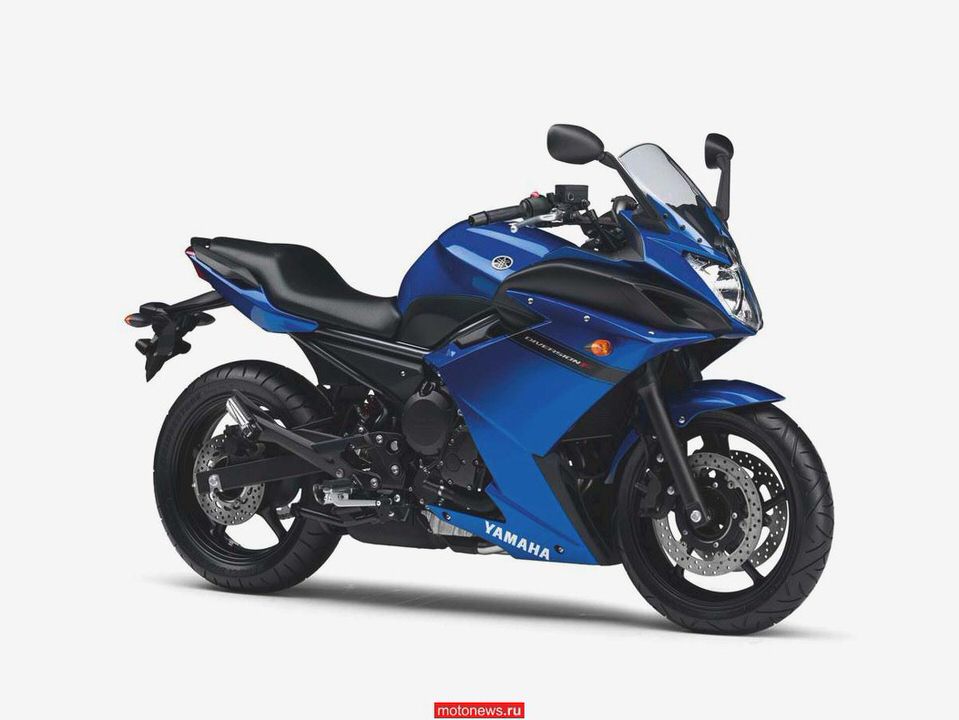
Yamaha XJ6 Diversion – an all rounder for the next decade?
Something I’ve mentioned several times in recent years has been the lack of exciting but affordable all-rounders in the middleweight division, a problem that exacerbates the tendency of newly qualified riders to jump onto sports bikes that are arguably too much of a handful.
Yet it wasn’t always like this. Just picking a few random examples from the last twenty-odd years, we can point to a whole bunch of bikes that that sold well enough and filled a need at a performance level below the sports bikes of the day.
The XBR500 proved there was a market for a brisk sporty single, despite the weird handling (I know, I put 85,000 miles on mine!). The NX650 Dominator sold steadily for years as an urban hooligan with just enough of a fairing to undertake a B road blast. The GPz500 was a pleasant enough bike with just enough performance to match its slightly wayward handling whilst the fairing provided reasonable protection at motorway speeds.
It’s not so long since the ZXR400 was a top seller in the mini-sportsbike market with its 60-odd hp pushing it up to around 130mph. Even the little VFR400 in its NC30 guise sold well for something that cost as much as a 600. The GS500 first appeared back in 89 and although it had a motor built a decade earlier, it was quite capable of hitting around 115mph with a genuine 50+ hp on tap.
And the XJ600 Diversion in its faired guise was a steady seller to riders who wanted a decent two up bike that could go places at a budget price, even if it didn’t get there quickly.
But one by one they grew old and vanished completely. Or got replaced by something inferior! The NX650 was replaced by the truely turgid NX650 Vigor that was 15mph slower and horrible! The GPz engine appeared detuned in the ER-5.
The GS500 just got slower and heavier. Pensioned off engines powering outdated bikes well past their sell by date by 2000; the CB500, the Bandit 600 and the BMW 650 single all being examples of bikes that were completely past their prime.
So what went wrong in the 90s? Emission regulations and noise limits have been blamed for the lack of development, but I don’t believe for a moment that the problems couldn’t have been surmounted – the 600s and 1000s are faster every year and THEY coped with noise and emission regs.
The reality is that for ten years or more, none of the tech improvements lavished on the supersports bikes made it to the midrange machines. In biking terms, the Bandit (until its latest update anyway) was using the equivalent of a Ford Anglia engine! No wonder it was 30mph down on its GSXR cousin and did much the same MPG!
In particular, for the rider wanting a middleweight with a fairing and reasonable performance and mile-crunching ability, mixed with light weight, decent fuel economy and a budget price, it’s fair to say that there has been very little choice in bikes that have a fairing AND could reasonably be classed as an all-rounder.
Sure, there was the faired Bandit and the CBF600, also the V-Strom, Transalp, Deauville, and the wretched faired GS500, but none of them quite hit the spot for a blend of performance, practicality and flair. The SV650 came close in faired guise, but was a bit too sporty in terms of riding position, or not sporty enough in terms of performance, depending on your perspective!
Rebuilding the middleweight market in the new century wasn’t helped by a false start with naked machines. Whilst the naked hooligan might look good on paper, many riders DO want a relatively uncomplicated machine with a fairing – the poor sales of the newest naked Hornet along with the naked FZ6 and GSR600 really must have disappointed the marketing men.
Probably the best efforts of the last decade were Honda’s faired Hornet which was pricey but a reasonably steady seller right up till 2002 when they discontinued it, and Yamaha’s own faired FZ600 Fazer and its replacement the FZ6 Fazer. Since the demise of the faired Hornet, Yamaha have had this class pretty much to themselves.
However, the recent success of the faired ER-6 and F800 varients suggest the market is still there.
So Suzuki sneaked in the GSX650F, a sharp looking bike with a distinctive GSXR family appearance.
And this year Yamaha have joined the fun with the new XJ6 Diversion.
I have to admit the launch of the two XJ6 versions, faired and unfaired (each with an ABS option), passed me by. They’ve not exactly been given the press inches of the sports bikes, but when I saw the Diversion in a dealers, I was taken by the looks.
So I took one out for a few hours to get some riding impressions.
Close up, you can see it’s been built down to a price. The screen feels pretty flimsy (just like the original ER6-F) with fairly crude trim. You get just the one headlight and why does a bike built in 2009 STILL have a single incandescent tail light bulb; what happened to LEDs?
Various bits like the gear shift and rear brake levers are painted steel rather than alloy, the footrest hangers are painted and already scuffing with just 500 miles on the clock, and the underseat area looks unfinished with no provision for storage built in.
But stand back where the cost cutting isn’t quite so obvious and you’ve an angular fairing with a flat blade screen that cuts through the breeze effectively, a functional dash that combines digital speedo and conventional rev counter, an attractively humped tank mating with a sculpted seat, slim spoked alloy wheels…
…and the neatest looking back end in the business!
No underseat exhausts here or ugly huge, stubby cans, just acres of empty space with the almost invisible silencer hung under the motor Buell-style, exiting just behind your right foot. Only the number plate / rear mudguard hung out behind on some ugly bracketry spoils the lines.
It took me a while to figure out what the Diversion’s back end reminded me of – it was my AR80 Kawasaki that I had as a London runabout back in the early 80s. That had the expansion chamber tucked under the motor with just the stubby silencer can exiting to the side, leaving the same emptiness around the rear wheel and tail unit.
Turn the key and the rev counter needle sweeps the dial and all the lights illuminate as the bike self-tests. Predictably, the bike is fuel injected with no choke, and a press or two of the button has the motor running straight away. Of course there’s no headlight switch but a clever touch is that the light doesn’t come on till the engine is running.
The first thing I noticed sitting on the bike and starting it was the exhaust note. It comes from the ‘wrong’ place, with the pipe exiting below you rather than behind. It’s muted, but at town speeds it’s got quite a pleasant ‘snarl’ to it, even through the ear plugs.
The bike shows a decent turn of acceleration in first, but the reason is quickly apparent as the needle zooms round the rev counter – just like the old aircooled Diversion, the new XJ6 is very low geared and hits barely 50mph in first. The pattern is repeated up the box too, with top gear hitting the red line short of 130. Magazine tests suggest the top speed is only about 120mph, too, which is less than I expected.
———————————————-
IF YOU’VE ENJOYED THIS ARTICLE, WHY NOT TAKE A LOOK AT OUR BOOKS?
The MAG Columns : this popular column has been running for nearly a decade in the Motorcycle Action Groups magazines, and are now available for the first time as a collection, updated and expanded, in one collection in either paperback or ebook format.
Over 40 articles deal with topics as diverse as recovering from a cornering mistake to safer overtaking, from overcoming tenseness to riding abroad, from riding in bad weather to coping with poor road surfaces.
Fascinating topics include the development and improvement of the mental skills we learn as we ride a bike.
———————————————-
Running the motor up through the revs towards the top end shows an almost completely flat power curve. The press blurb goes on about how peak torque of 44ft/lbs is achieved at the ‘low’ figure of 8,500rpm, but to be blunt, it’s not torque figure that allows it to achieve what performance it has, so much as a combination of the low gearing and the relatively short throttle action which meant I was often much closer to full throttle for any particular “twist of the wrist” than I would have been on the Hornet.
Frankly, the motor was a bit of a disappointment, given the claimed 78hp. It’s much flatter and distinctly down on power from my 02 Hornet which is usually measured at around 82hp. Someone’s not telling the truth!
It’s hard to believe this motor originated in the pre-06 R6, and it’s a very different animal from the version in the FZ6 Fazer which has a real kick at the top end as well as an extra 20hp. There’s nowhere the XJ6 picks up its heels and takes off – it just gathers speed all the way to the red line, set surprisingly low at 11,500rpm.
Having said that, the Diversion offers a practical and fun riding experience at B road speeds. The gearbox is light and precise as is the clutch, and the engine is vibration-free so keeping the bike in 3rd and 4th isn’t a chore, and using the revs in the intermediate gears offers enough real-world speed and acceleration to deal with twisty country lanes with a grin.
Though top gear acceleration is never going to set the world alight, on faster roads the low gearing offers enough ‘oomph’ for shifting lanes and making motorway-style overtakes without dancing on the gear lever. The motor was also perfectly suited to town riding, being easy to ride in top at 30 with sufficient acceleration on tap for most urban eventualities. The fuel injection is smooth enough if you’re progressive with the throttle, but sudden opening/shutting does produce a few jerks.
The ride is surprisingly firm and well controlled for a budget bike with non-adjustable suspension and a straight push rear shock, and it’s very definitely one up on the soggy CBF600 which is clearly its most direct competitor.
Unfortunately, handling felt a bit “floppy” at junctions, something that I suspect the tyres had a hand in. It’s a 160 profile at the rear, supposedly to speed up agility at slow speeds, but to me the bike felt a bit reluctant to turn initially, then suddenly fell into corners – I had one nasty moment on a slower turn with the rear Bridgestone stepping sideways which didn’t inspire me with knee-down confidence.
Out on the twisties, it was a very precise steering machine at the kind of speeds I was riding at, and stable over bumps and ripples though given the earlier warning from the back tyre I didn’t push it too hard.
The bars are far too wide too, and arguably don’t help with the slow control – the clutch lever gets a long way away from the rider with the bars on full lock. The bike wouldn’t make an ideal commuter if you planned to filter.
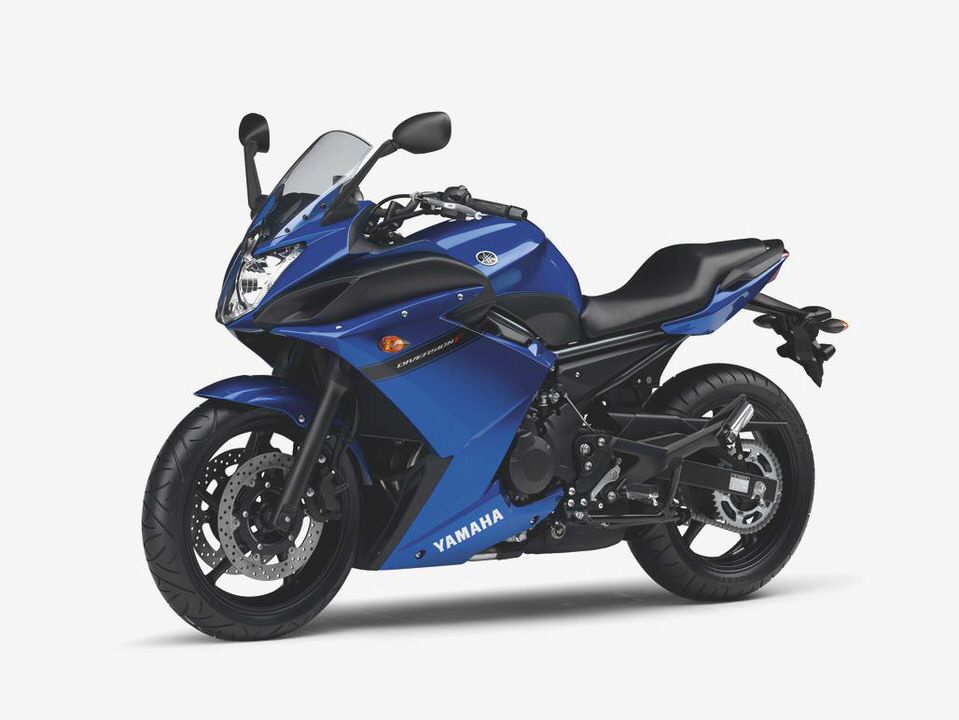
It’s not particularly light either. The spec sheet shows it weighs in at around 205kg (450lbs) and although it’s touted as a bike for smaller riders, I couldn’t quite get both feet flat on the ground and I’m a fairly average bloke at 5’9″. Women will find it a bit of a handful, I suspect, and that’s a shame as they will be one of the target markets.
The bike I rode had already been dropped at a standstill by the previous rider.
The front brake initially needed a firm squeeze to get any retardation, but as I rode the bike the brakes seemed to be building power – I suspect they weren’t bedded in on this nearly-new machine. But what was noticable was that there was no sudden bite – the front is very user friendly, even on the non-ABS version I rode. The rear by contrast is a bit sudden and arguably a bit too powerful – it would be easy to lock in the wet.
The seat was firm, broad and surprisingly comfortable for a couple of hours riding, although the ‘hump’ didn’t allow for much shuffling backward which could possibly affect taller riders, and the pegs felt a little far forward for my liking. I’m not sure how long the average passenger will last on the rear seat either. Fuel consumption appeared to be around 50mpg, which isn’t too bad, so the 4.5 gallon tank would give a handy 200 mile range.
At motorway speeds, the screen was also suprising effective, with less turbulence than my faired Hornet.
Other comments? Like the bars, the mirrors are arguably TOO wide. I never thought I’d say that, having grown up on bike after bike offering a fine view of my elbows, but they stick out a long way and are like car mirrors with a position the stalk clicks into, so you can’t pull them in and adjust the mirror on its ball to make them narrower.
There are no nice touches like bungee points, but you do get a centre stand.
On the right hand side, there’s a plastic “bumper” that sticks out proud of the fairing, and I thought “ah, crash bung – good idea”. But the matching one on the left is set inboard of the fairing panel! Eh??
I liked the twin trips on the dash, and the clock. I’m not so fond of digital speedos, but it was easy enough to read, even if it appeared wildly inaccurate at motorway speeds – an indicated 95 and I was barely closing on an old Metro! I’d guess it was over-reading by around 15mph at that speed.
So where do I stand on this bike?
It’s a tough one. I’m in two minds about the bike. It’s got the looks to pull new riders away from the sports bikes and back to something more sane, but I have to ask myself if it has the performance?
It’s supposedly 16hp up on the original 90s Diversion and I was expecting a top speed of around 130-135 and performance similar to my 02 Hornet, which I would have been totally happy with. In fact, it’s way off that bike as a benchmark and though handling and acceleration is distinctly better than the venerable air-cooled original Divvie, outright it’s seems it’s little faster. So what’s happened to twenty years of technological development?
Why have they felt the need to emasculate the R6 motor so drastically? Reliability perhaps, given that these kind of bikes probably don’t see the inside of a workshop too often.
It’s supposed to be managable by smaller riders, but in fact the seat height is nearly 31″ and it’s heavier than a GSXR1000. The 160 rear tyre is supposed to make town riding a breeze but it actually felt less at home there than on the open road. Again, there are compromises apparent that don’t work that well in the harsh light of the real world.
Pricing is an issue too. It’s pitched below Yamaha’s own existing and much more peppy FZ6 Fazer but the Diversion isn’t particularly cheap at £5450 (autumn 09 figures), with ABS adding around £300 to that figure. That puts it around £200 more than the CBF600, which has been a conspicuous sales flop. And Hondas are traditionally priced above the opposition. The new ER-6F with its Ninja-styled fairing and the GSX650F both perform similarly but are cheaper.
And not far the other side of the £6000 mark are the F800 BMWs.
And, let’s face it, just under six grand will pull in some interesting low mileage second hand machines.
Given the limited top speed, will the looks and the undoubtedly agile B road handling be enough to sell it in numbers?
Personally, I doubt it will be shifting fast out of the showrooms at the price it’s currently pitched, so it will be interesting to see how low dealers will go on the new bike price.
If you’re an experienced rider looking for anything other than a runabout, I think you’ll be disappointed and would be better looking at the FZ6 Fazer if you want the performance in a machine with all round capabilities. And quite frankly, if you just want a budget runabout, there are cheaper machines!
Having said that, if you’re a new rider looking for your first big bike, it’s definitely worth a look and it may well turn out to be exactly the bike you want – it’s still a lot quicker than a GS500 or CB500, and it’s a rocketship if you passed your test on a 125!
And if that high price does prove a barrier to sales as I suspect it will, you may well find the dealer keen to throw in riding gear to sweeten the deal, ideal for a new rider looking to kit themselves out.
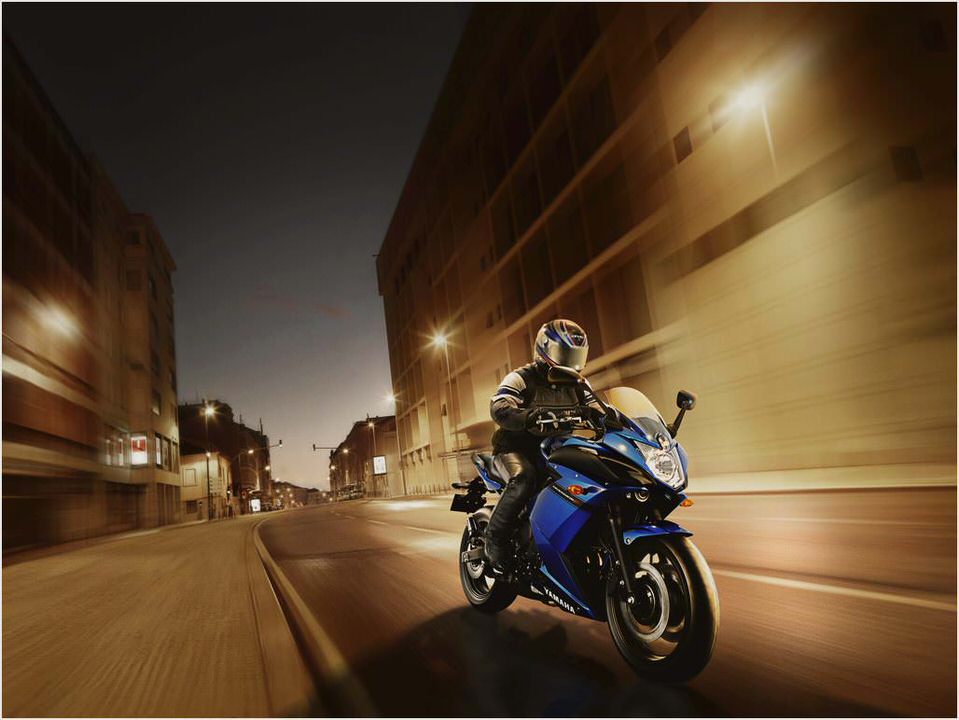
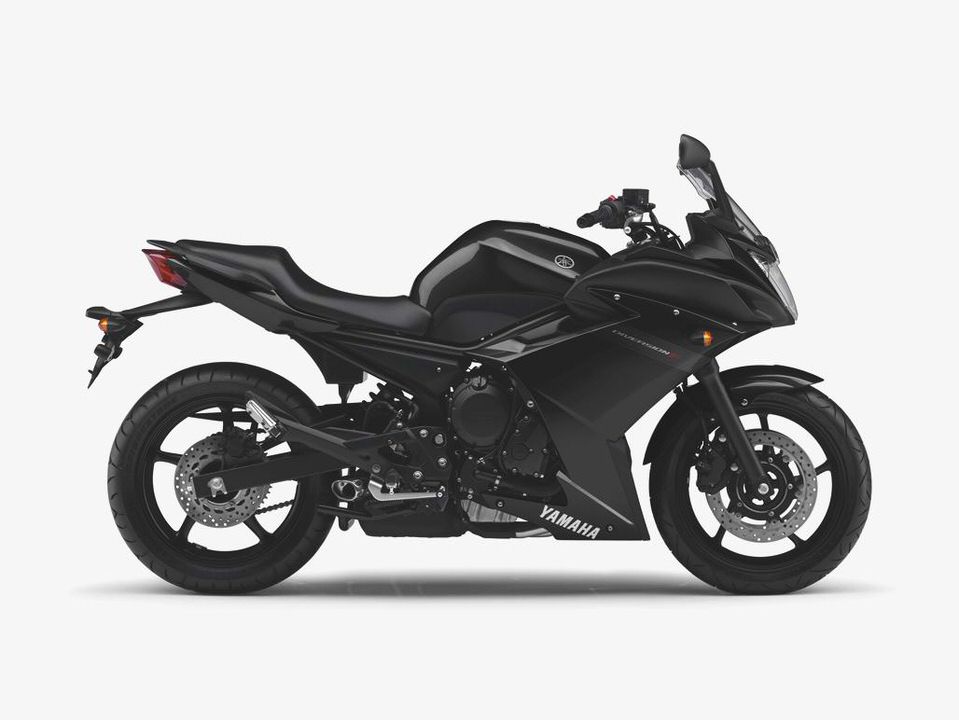
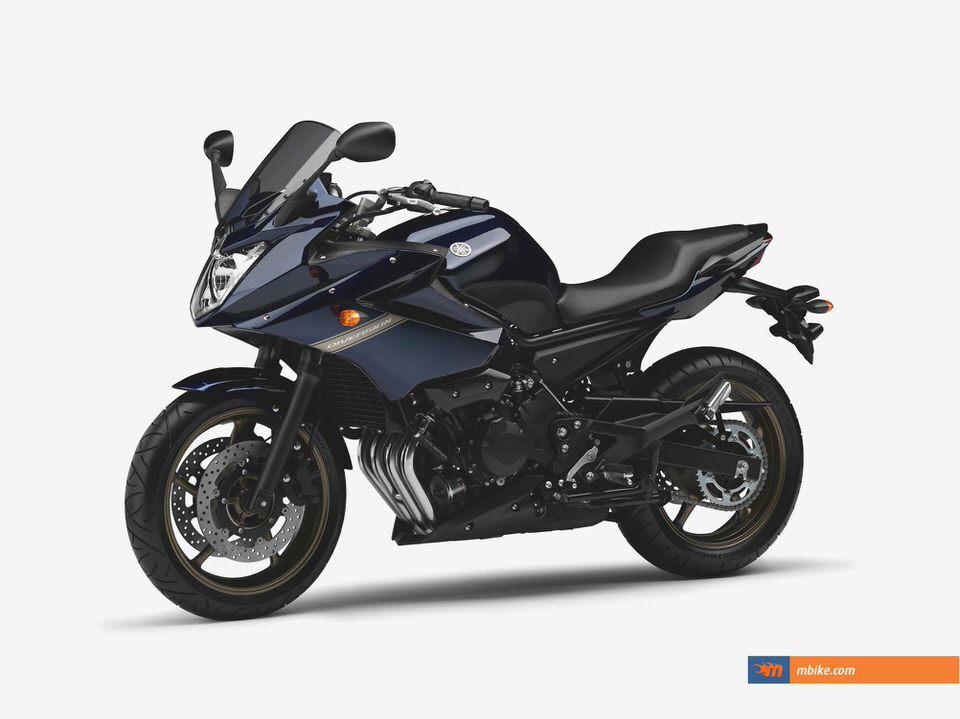
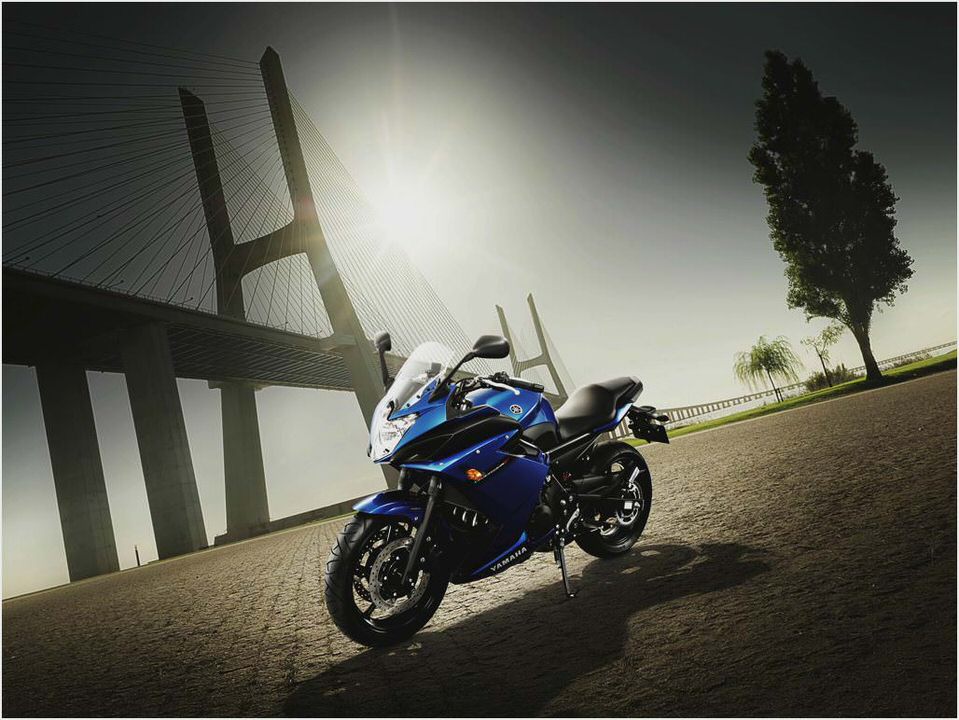
- Yamaha EC-03 Video Scooter News and Reviews Scootersales
- 2009 Yamaha MT-01
- Yamaha Virago XV 535 Custom Cruiser, Full Road Review Complete How To…
- 2011 Yamaha FZ8 Yamaha Motorcycles .org – Yamaha Motorcycle & Yamaha…
- 2009 Yamaha XJ6 Diversion – An Ideal Balance (09 Sep 2008)

